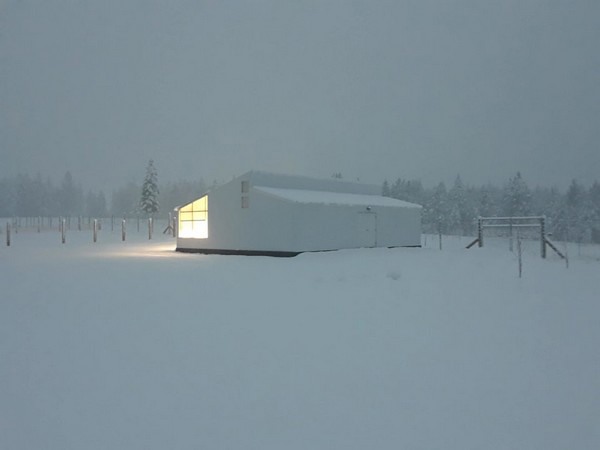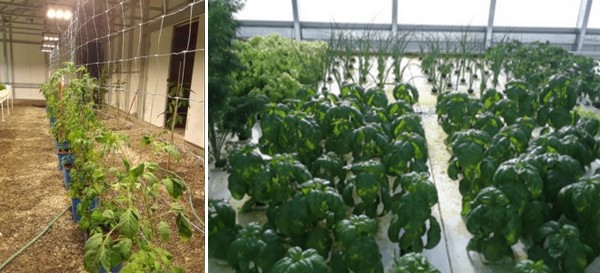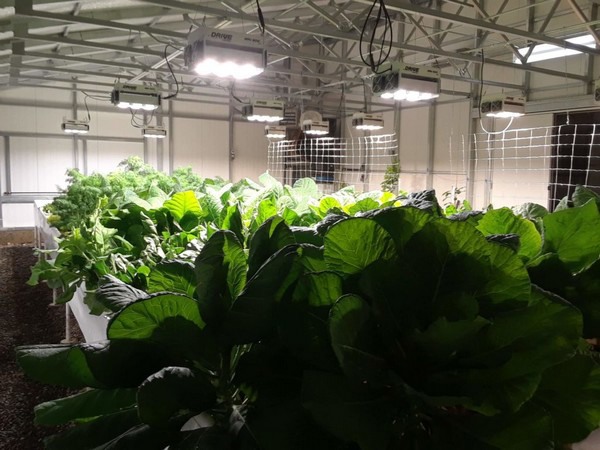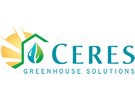Just 75 miles South of the Canadian border, in the little community of Careywood, Idaho, sits a 23×40 flourishing aquaponic greenhouse that grows fresh fruits and vegetables all year long. The owners of the greenhouse are two retired medical professionals who have taken on sustainable food production as a side hobby, and as a result, are able to provide fresh fish and produce for their local community.

It all started with a book checked out at the library. The owner of this Idaho greenhouse discovered Ceres when he was researching passive solar design. Heat conservation is critical in the Northern latitude so Ceres was a good fit for this project due to our innovative climate control technologies and energy-efficient design. Read the blog on cold climate greenhouses for more information. Ceres teamed up with The Aquaponic Source to build a greenhouse with an attached 10ft head house on the North side to house three fish tanks. Placement of the fish tanks in the head house allows for maximum production inside the greenhouse and it helps insulate the aquaponic system more effectively. For more information, read the blog, 7 Tips for Designing an Aquaponics Greenhouse.

The greenhouse itself is made up of three growing zones. One area has deep water troughs that function with the aquaponic system to grow greens, lettuce and herbs. A second portion of the greenhouse contains dutch buckets that are growing tomatoes and peppers. And planted along the north wall of the greenhouse is a row of avocado and lime trees trained to grow flat against the greenhouse wall. The trees are planted against the north wall in order to limit shade on the other plants.

The greenhouse is heated by a Ceres GAHT (ground to air heat transfer) system which is the main source of heating and cooling most of the year. In especially cold Idaho winters, the owners of the greenhouse will use supplemental heating to maintain an agreeable temperature for the nitrifying bacteria in the aquaponic system. Otherwise the GAHT system works to keep the greenhouse above 55°F at all times. The greenhouse also uses state of the art LEDs as a supplemental lighting system during short or cloudy days. The combination of sunlight and LEDs ensures the grower bountiful year-round production.
The three aquaponic fish tanks are filled with about 75 Largemouth Bass that are triaged by size because, without separation, the mature fish would eat the fingerlings. Just like the fruits and vegetables, the bass are harvested for eating. The greenhouse harvest is sold at a local indoor farmers market in Cocolalla, Idaho.
This greenhouse with an integrated aquaponics system can produce up to 10,000lbs of vegetables and 600lbs of fruit annually.
For more information: Ceres Greenhouse Solutions
Ceres Greenhouse Solutions
4760 Walnut St., Suite 106
Boulder, Colorado 80301
303-495-5006
info@ceresgs.com
www.ceresgs.com
